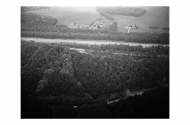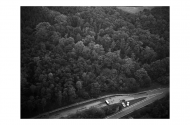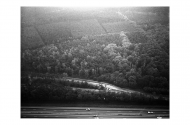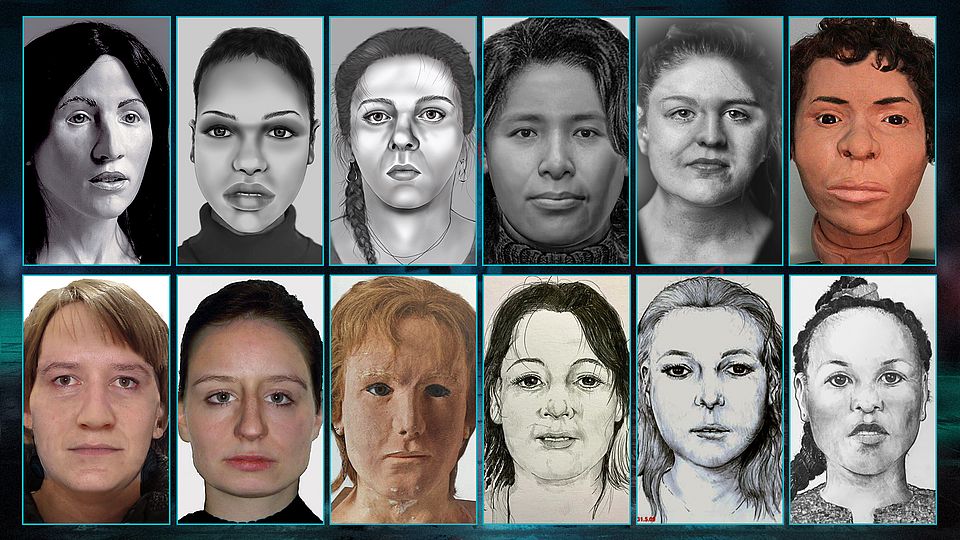“Together with her father, she is the finder of the corpse of a child, which we later called the Heulgirl. Het Heulmeisje was 13, 14 or 15 years old when she died. Her cause of death has never been known. Research has shown that she probably grew up in Germany. The last months of her life she was fed one-sided food. This could indicate poverty or kidnapping.”
”Melissa says her parents were stunned and shocked after the discovery. The murdered child just lay straight, she had been put there. The corpse was in a state of decomposition and lay under branches, she describes. Her father tried with a stick to see what was going on. The movement made Melissa see the girl's hair slide off the skull. “As a child I was aware of what I had found. But I didn't have that much of a problem as a kid. I had no fear, it was kind of an exciting event.”
DNA research
The DNA research into the identity of the Heul girl has been halted for years. The DNA of the child is known, but in the Netherlands searching for a match with relatives in the databases is no longer a priority. In Germany, privacy laws stand in the way of a search in the DNA databases. Melissa: “With that DNA you have a golden key in your hands, but now the lock. I want the meeting at the grave on November 11 to also be a signal to Germany. That her case, literally and figuratively, will once again be highlighted.”
Melissa uit Amerongen roept op: ‘Laten we met zoveel mogelijk mensen kaarsjes branden voor Heulmeisje’
Article date 8 april, 2020
German match
In 2016, police investigator Wim Perlot announced that a large-scale kinship investigation would take place in Germany and the Netherlands on the basis of the DNA just obtained. The DNA of the Heulmeisje is placed next to databases with the DNA profiles that are known to the police. This makes it possible to search for the girl's relatives. Perlot said at the time: "I will only really cheer when we get a match from Germany." At the time, the police said that the Germans wanted to cooperate with the investigation, but that turned out not to be the case.
Six years later, the police say: "German law does not allow kinship research at all." According to the police, this makes it difficult to organize kinship research in Germany. It would only be possible if the Dutch police have more clues about the identity of the girl. It was also difficult in the Netherlands. Police spokesperson Suzanne Lesquillier: "According to the Scientific Bureau of the Public Prosecution Service, kinship research was not possible in the Netherlands in the first instance because of the statute of limitations of the case."
The Public Prosecution Service announces that the process has indeed started, but that the examining magistrate still has to give permission for the investigation. At the moment, no DNA has been compared yet.
Missing children
According to Lesquillier, tips are still regularly received about the Heulgirl from Germany, Belgium, Poland, Austria, Switzerland and Croatia. Het Heulmeisje is also regularly linked to missing children, especially in Germany, such as the then 15-year-old Andrea Frischholz, who disappeared in May 1976 in Flossenbürg, Germany. The police also say they have checked this tip and are convinced that Andrea is not the Heul girl. It is not clear when the police expect the current DNA research to yield results.”
Politie start na zes jaar eindelijk met grootschalig dna-onderzoek naar Heulmeisje, maar niet in Duitsland
Article date May 10th,2022
Province of Utrecht - The large-scale kinship investigation into the identity of the Heul girl has still not started.
“The project is not given priority by the Public Prosecution Service. Also in Germany there is no active investigation, that is not allowed by the privacy law. A search was made for family in a separate DNA file of missing persons, but that did not yield a match.
A lot of perseverance is needed to gain clarity about the status of the investigation into the girl. The various parties involved in the investigation regularly contradict each other. Moreover, there is confusion about the terms, such as a 'relationship investigation'. It will take weeks to find out the status of the investigation into this crime.”
Onderzoek naar identiteit Heulmeisje ligt stil, 'geen prioriteit' voor OM






